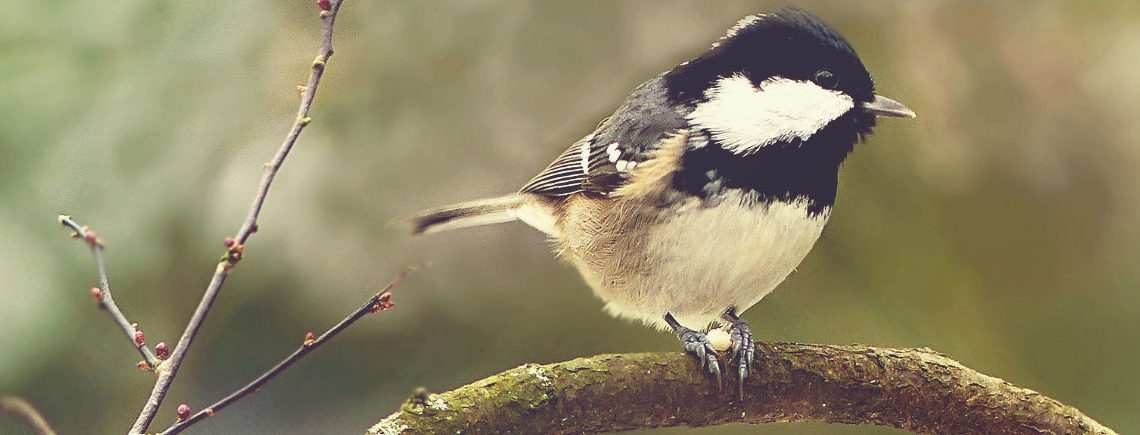The Coal Tit: A Guide To Ireland’s Garden Birds
Known as the ‘Meantán dubh’ in Irish, the tiny and small bird known as the Coal Tit is a regular visitor to many bird feeders and tables across Ireland, especially in the winter months when food is scarce and more difficult to find. There are at least eight sub-species of coal tit, with the ‘Periparus ater hibernicus’ exclusive to Ireland.
In this blog post, we’ll guide you through how to spot a coal tit in your garden, what to feed it, and the best way to care for it.
What Does a Coal Tit Look Like?
The coal tit is 10–11.5 cm in length. At first glance, they appear like a smaller, less colourful version of a Great Tit. They have a distinctive pattern on their head white cheeks with a black crown, bib and side, with the nape of the neck having a long white patch. Their back, tail and wings are grey with hint of green, and small white marks on their wings. They have a small pointed bill and short legs with a brownish underside.
The young Coal Tits are duller than the adults, with a lack of gloss on the black head, and with the white of nape and cheeks tinged with yellow.

What Do Coal Tits Like To Eat?
Coal Tits feed mostly on small insects like dried mealworm, but also eat seeds, particularly in the winter time. They enjoy peanuts, black sunflower seeds, sunflower hearts, and suet.
Coal tits will hoard food to save for later, so be sure to catch a glimpse of them between June and December to see what they do with the seeds they take from feeders. When hoarding, they tend to regularly dart back and forth to the feeder during a short time frame. This is because they can only carry one seed at a time due to the size of their beaks, as well as the fact that they take each food item to a different locations, which is known as scatter hoarding.
How To Feed Coal Tits
Coal tits are resident in Ireland all year and don’t migrate. In winter they form mixed flocks with other tits such as Great Tit and Blue Tit, and wander woodlands, parks and domestic gardens to try and find food. This is when they are at their most visible, and when you’re most likely to notice them clamouring around the bird feeder in your garden.
They will readily visit bird tables in urban gardens and happily use peanut and suet feeders. Coal Tits will also happily feed on domestic scraps left under tables too.
They are very acrobatic birds, often seen hanging upside-down on branches while pecking at buds or foraging for insects.
Where Do Coal Tits Nest?
Coal tits will nest in small cavities in a tree or wall but will also happily set up home in a nestbox in your garden. Their nesting habits are similar to blue tits, but differ in methods. Coal tits often line their nests with moss, whereas blue tits don’t.
The very small (15mm by 12mm) eggs are incubated by the female and are speckled with reddish-brown dots. Both the male and female assist in feeding the young. They usually breed in mid-April, and the young tends to hatch around 18 days later.
What Do Coal Tits Sound Like?
Coal Tits are often heard more than they are seen. In woodland areas their distinctive ‘coo-tee, coo-tee’ call is a common sound. Some phrases of their song sound similar to those of the Great Tit, but their voice is thinner than those of their cousins. The quality of Coal Tit’s song has been compared to the repetitive whistle of a bicycle pump – a rapid “pitchew, pitchew, pitchew..”
